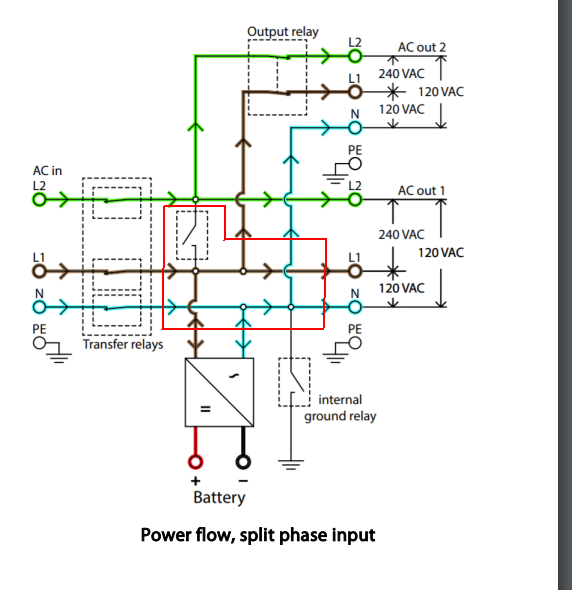I have what I believe to be a rather unique shore-power charging issue with the Victron power system onboard my Casita camper.
Background:
My Victron systems consist of the following:
4x Victron 12-volt LiFePo4 smart batteries
1x Lynx Smart BMS
2x Lynx Distributors
1x Multiplus II 12V/3000 watt Inverter
2x Bluesolar 150/70 Charge Controllers
1x Cerbo GX/Cerbo Touch 50
My shore power feeds in via three modes - routed where needed via a Blue Sea Systems 9019 AC rotary switch rated at 240 VAC/65A: https://www.bluesea.com/products/9019/AC_Rotary_Switch_-_OFF_%2B_2_Positions_240V_AC_65A

Mode 1 - For trickle charging at home/RV park: 120 VAC via an adapter attached to the external shore-power AC-IN port (working perfectly) – see attached photos of the adapter and Cerbo in 120VAC charge mode.
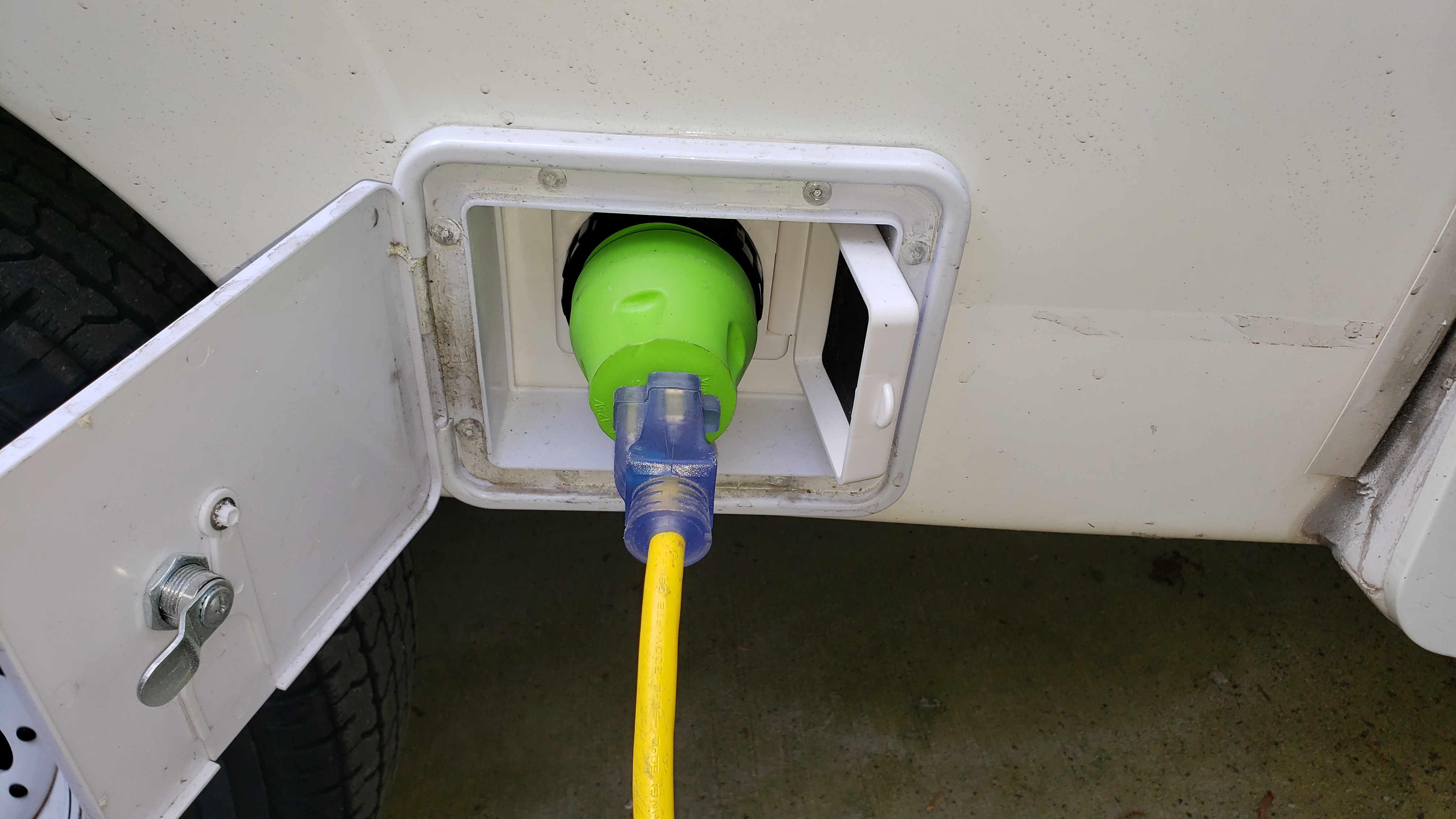
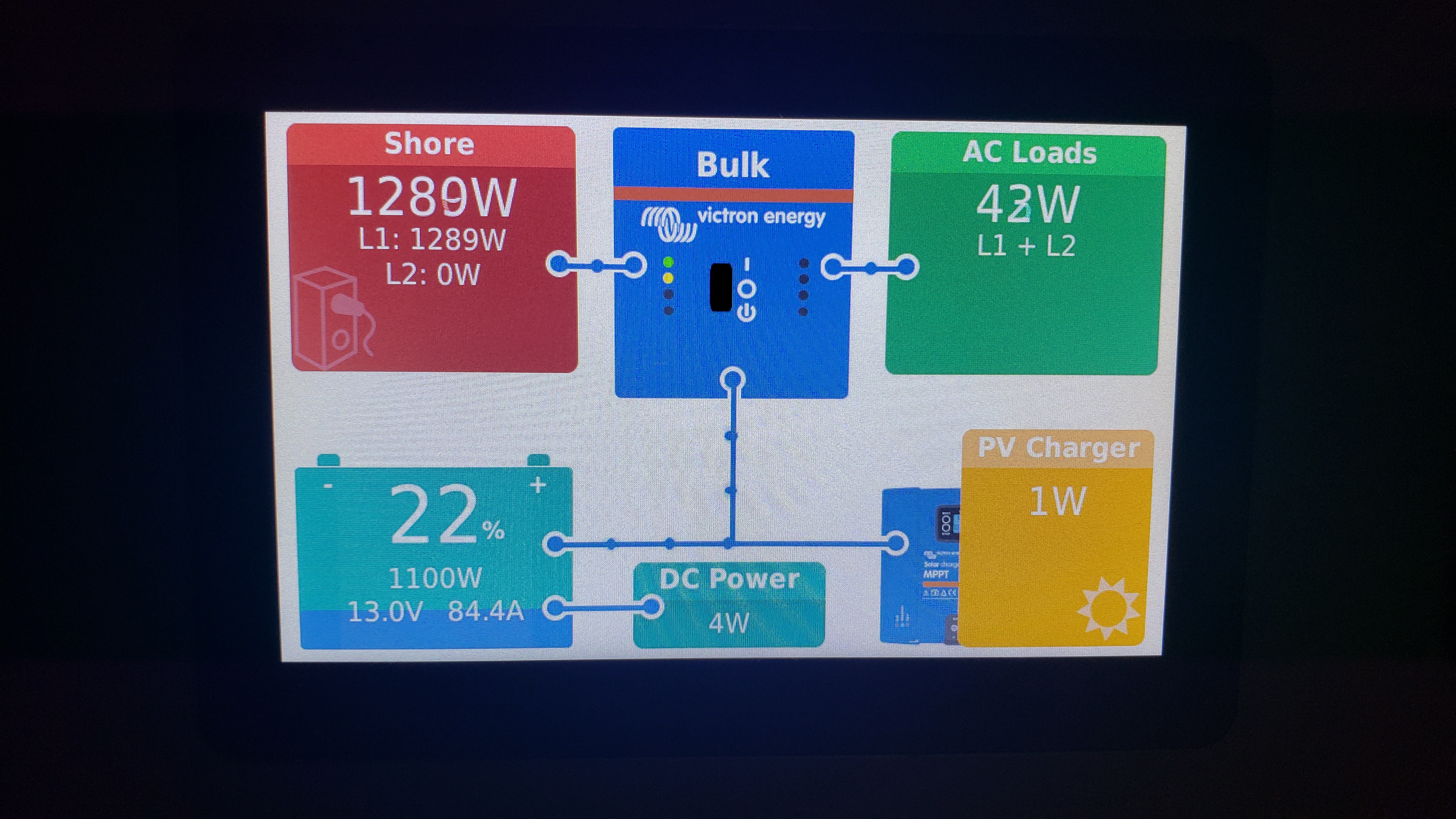
Mode 2 - For faster charging at home/RV parks: 240 VAC via the same external shore-power AC-IN port sans 120 VAC adapter. (yet to test)
Mode 3 - For faster charging via electric vehicle supply equipment (EVSE) when on the road: 240 VAC via a J-1772 EVSE-IN port. (does not function) – see attached photos.
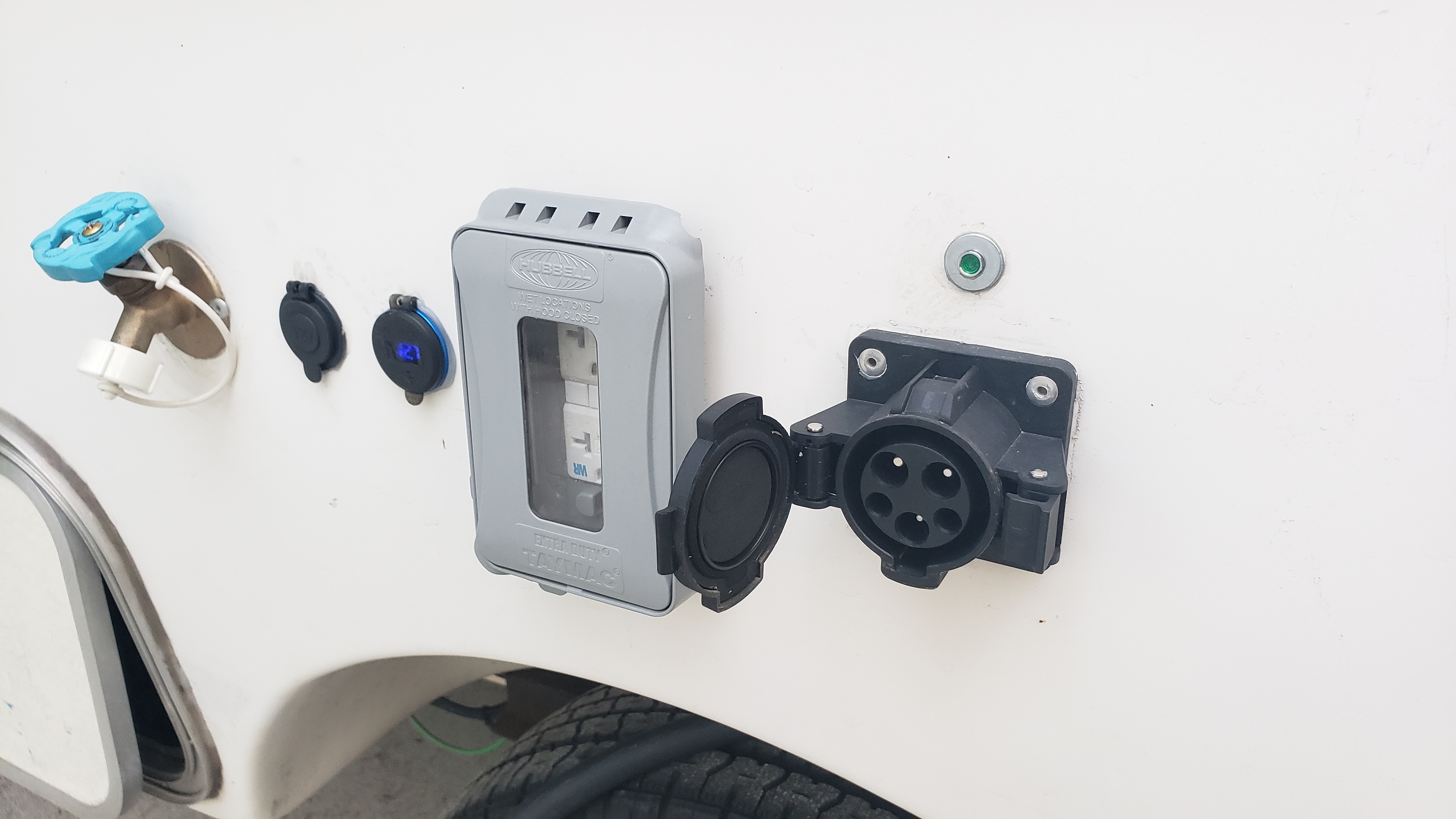
That last AC-IN via J-1772 mode is the reason I am submitting this question.
I have checked all the connections and they are wired properly and secure, and power seems to be flowing to the inverter – at which time the inverter makes a few “relays clicking” sounds – but charging does not initiate - and no warnings/errors pop up from the Victron system. I have tried charging with the AC current limit switch in the Cerbo set at 30, 40, and 49.5A mode – but no luck.
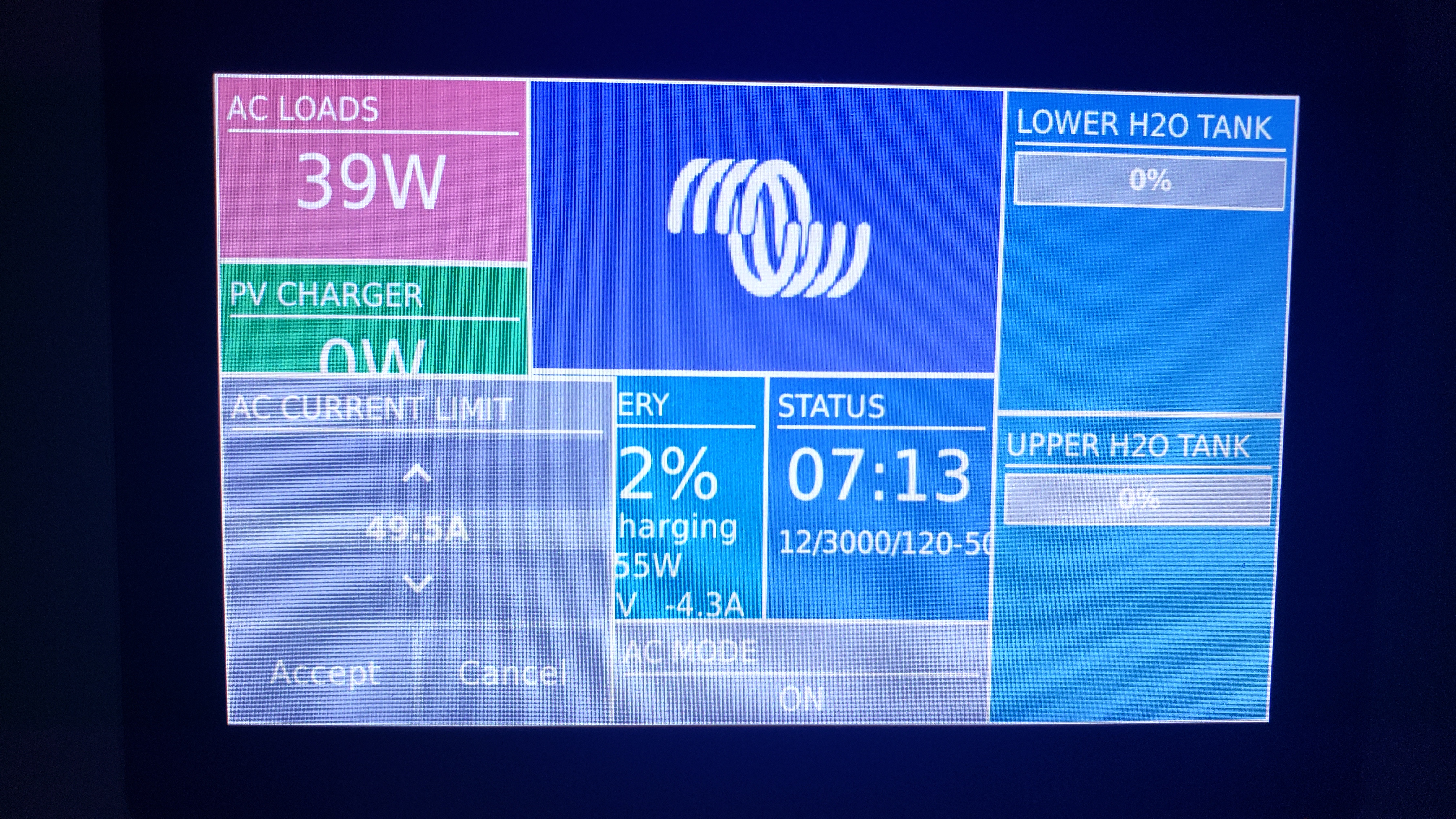
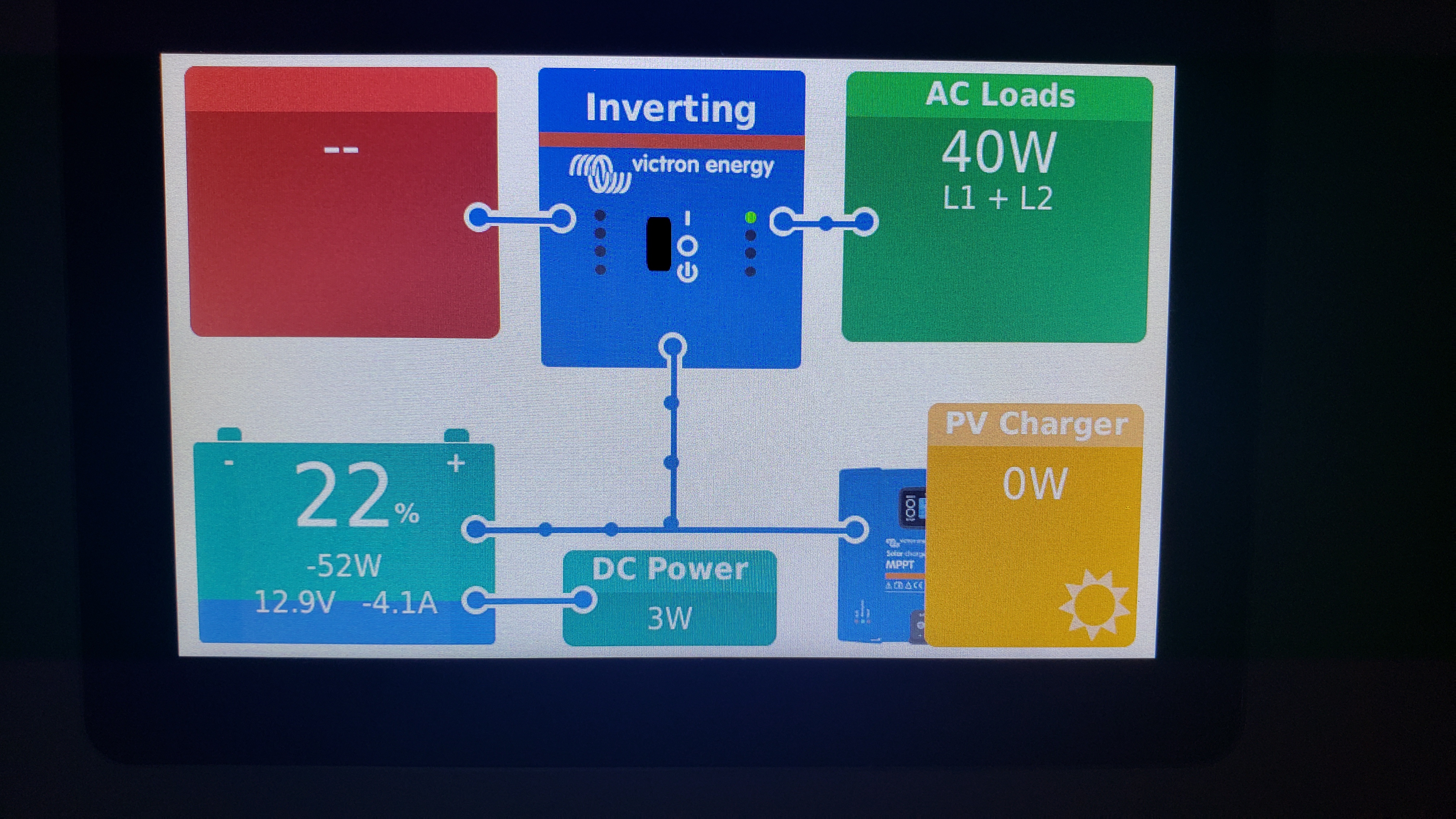
For reference: The J-1772 adapter I am using is this unit from TucsonEV “J-1772 Adapter with remote pilot box” (scroll ½ way down the page to see the exact 50amp rated unit I am using): https://www.tucsonev.com/ This unit does not have a “neutral” wire so I have some concern that this may be part of the problem.
When plugged into my 240 VAC home EVSE unit, the charge adapter’s active light illuminates green (see photo)...
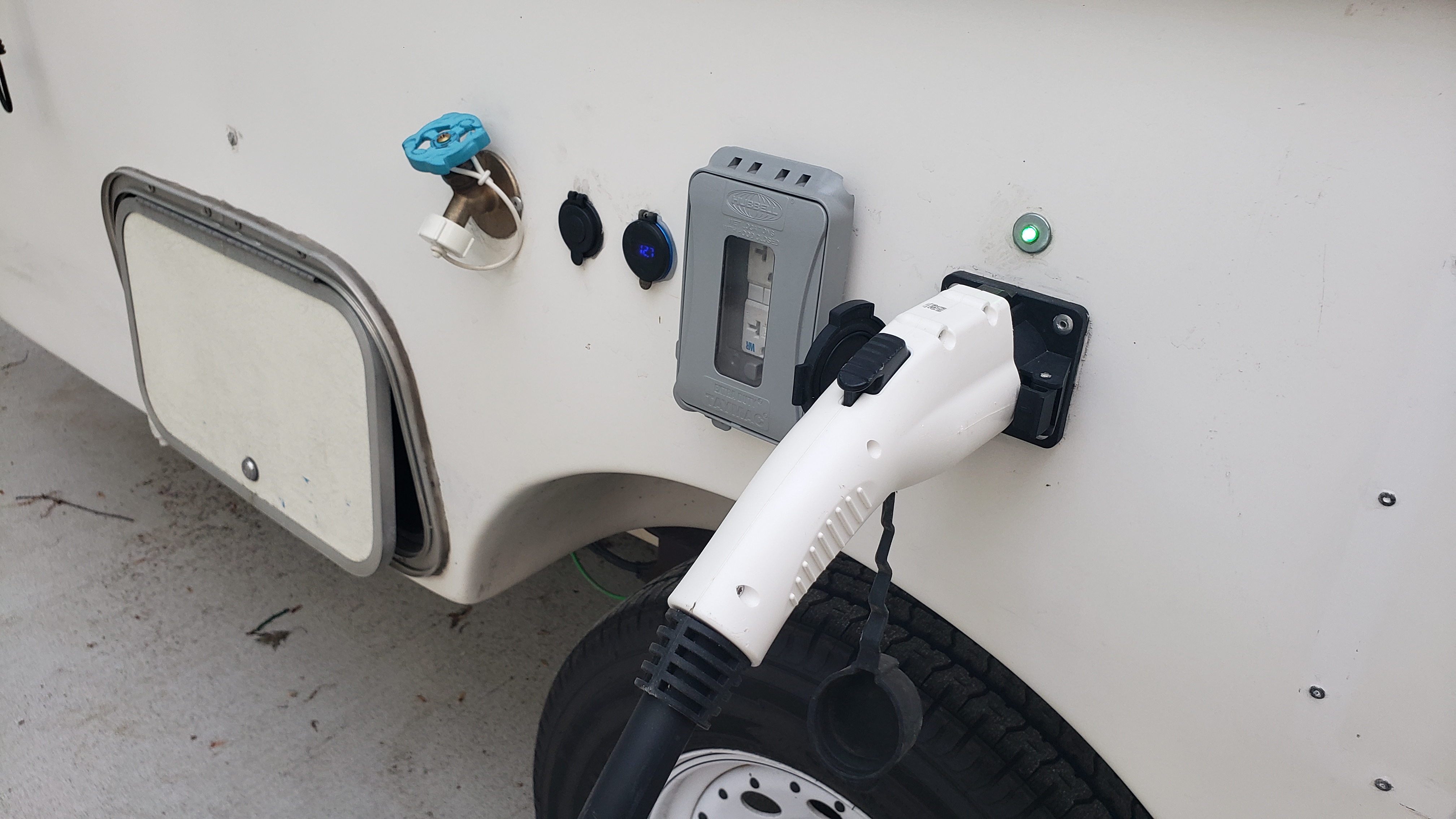
...and the EVSE in the garage makes a “thunk” sound when its contactor closes sending 240 VAC to the J-1772 IN port. I have checked for voltage on the terminals at the Blue Sea systems switch and have 241 VAC - so I know the TucsonEV J-1772 adapter is functioning nominally sending current to the switch and onward to the inverter. Therefore, I feel that the problem must lie in the Inverter’s settings – but I could be wrong.
So, my question is this: Other than in the Cerbo's on-screen current limiting settings, is there a setting in the Multiplus II Inverter’s settings that allows/restricts 240 VAC IN? If so, where do I find this setting and how would you recommend I configure it to allow 240 VAC-IN charging via the J-1772 AC-IN charge port?
I am also a bit concerned that the 240 VAC external shore-power AC-IN port also may not function – but I do know the wiring is correct as the 120 VAC shore power is working perfectly. I will not be able to test this unit's 240 VAC functionality for a few more days.
Any suggestions will be much appreciated.

